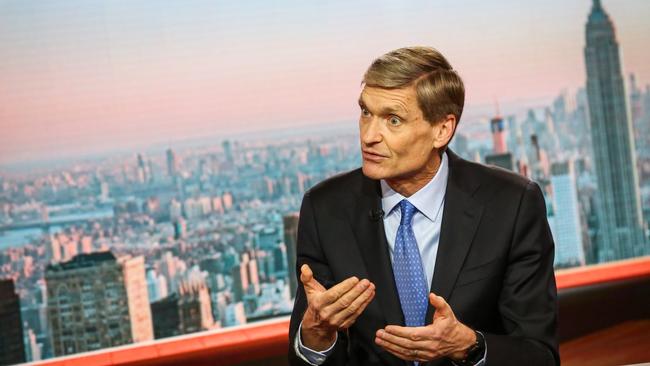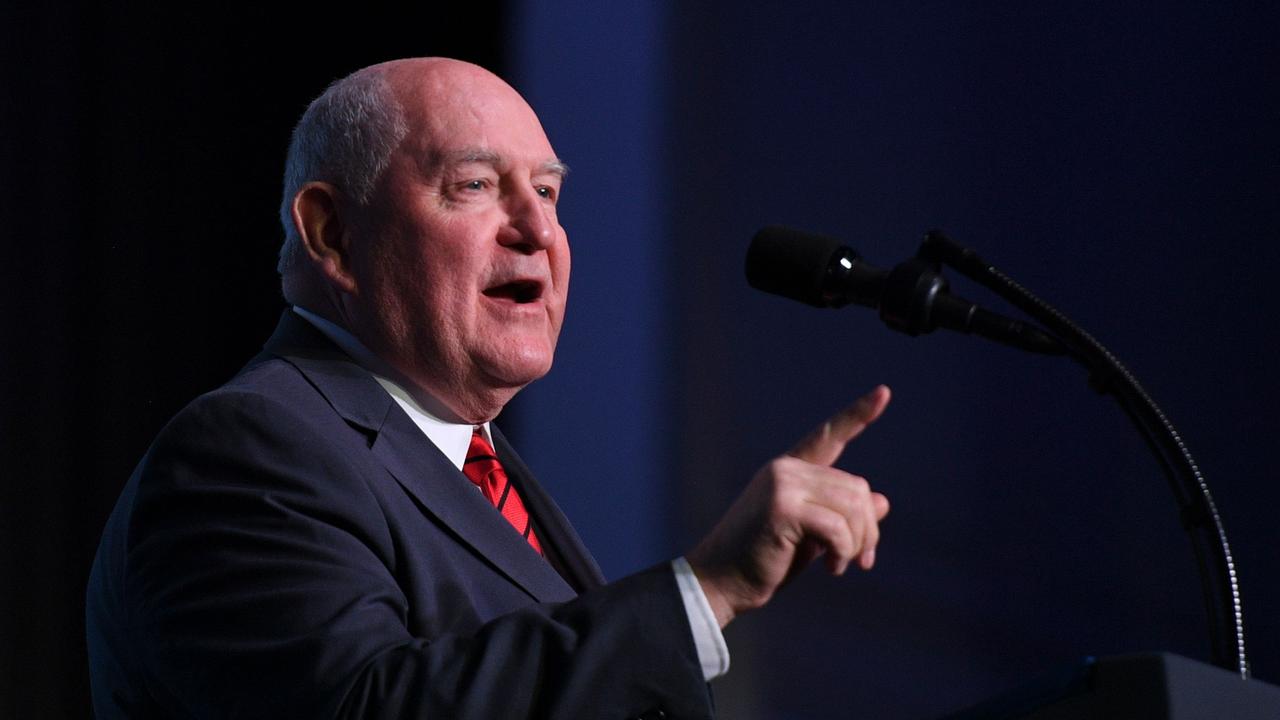Food, retail chains turn to blockchain to make supply chain safer
Walmart, Nestle, Unilever and Tyson Foods are turning to blockchain technology to make the food supply chain safer.

Frank Yiannas knew he had a problem.
When the executive in charge of food safety at US retail giant Walmart asked his staff to trace a packet of sliced mango from one of the supermarket aisles back to the farm it came from, it took an astonishing six days, eight hours and 26 minutes.
When he asked Brigid McDermott, IBM’s vice president of blockchain business development, to help him perform the same task, it took her a mere 2.2 seconds.
It’s one of the prime reasons the retailing giant announced this week that it would require certain suppliers to use IBM’s blockchain-based Food Trust platform, which has been developed by the tech giant over the past 18 months through an alliance with the world’s leading food companies.
Firms such as Walmart, Unilever, Driscoll’s, Kroger, Nestle and Tyson Foods have all been working with IBM to explore how blockchain technology can be used to make the food supply chain safer.
In Australia the issue of food safety and transparency in the supply chain has come to the fore in the wake of the scandal surrounding needles found in strawberries. The scandal extended to supermarkets in New Zealand.
In America Walmart will now require its lettuce and spinach suppliers to join the IBM blockchain network after the retailer’s romaine lettuce products were hit by a major E. coli outbreak that lasted three months earlier this year. It was eventually traced to tainted canal water in Arizona.

The directive will be extended to the retailer’s other fresh fruit and vegetable suppliers over the next 12 months.
For McDermott, Walmart’s move is an important step forward in improving not only the safety of the food supply chain, but in value-adding.
“It’s 2018, you would think this was something that is readily available but it’s not. It is weeks or months before people know (food from) a particular area is a problem — that means cost, a waste of food that is perfectly safe and fear of the unknown for the consumer,’’ she told The Wall Street Journal’s Global Food Forum in New York this week.
“The value of bringing together this information is not limited to food safety. Once you know where your food is coming from, you can think about it in terms of inventory management, things like organic and sustainability guarantees. You can think of all different ways of using the information.”
The impact of new technology on the food industry was one of the key themes of the Food Forum conference, all the way from the farm gate to the grocery store and the home. In a poll of the audience at the forum, 45 per cent said it was inevitable the use of blockchain in the food system would eventually provide benefits to consumers.
Yet McDermott used the example of the average US blueberry farmer — who grows just two acres of the fruit — to highlight the challenge of getting the technology into the right hands across the food supply chain.
“They don’t have an IT department; they have a phone,” she said of a blueberry farmer. “How do we make sure they’re able to get on (blockchain)?”
Rather than being concerned about the security of the blockchain, she said she was more worried about getting farmers, food processors and retailers to actually use the technology.
She described blockchain as “a crossword puzzle done in pen”, because everyone can see what changes are made. But importantly, she said there was no reason it could not be integrated with existing supply chain systems in the food sector.
Liam Condon, a member of the board of management and president of the crop science division at Bayer, said blockchain could help answer the demands of consumers for a stronger link to the source of their food at the farm gate.
“By using blockchain technology we could actually strengthen that link to the consumer,’’ he said, before adding there was still a long way to go to improve the transparency of the supply chain.
He said the bigger challenge for today’s agriculture was no longer increasing productivity alone but rather balancing productivity and sustainability. Technology offered by data analytics, he said, could help food producers marry the two.
In this context Erik Fyrwald, chief executive of Chinese-owned seed giant Syngenta, said new gene-editing technologies allowing plant scientists to make precise tweaks to crop DNA that could help improve the quality of food by producing better-tasting vegetables. “We find tomatoes that taste better naturally and then looking at the gene we can tell which gene is creating the better taste,’’ he said.
But he lamented the lumping of gene-edited foods in the same category as genetically modified foods, which has made them a turn-off for some consumers
GMO foods have been banned by a number of countries in the European Union.
“Gene editing is like breeding, only faster. It is wrong to ban it based on GMO principles,” he said, criticising a recent EU court ruling that found seeds developed via new gene-editing technologies, like Crispr-Cas9, should be regulated the same as those subjected to genetic engineering.
“Unlike GMOs where you have a marker gene and you can tell within minutes if it’s GMO, with this (gene-editing) there are no markers so you can’t tell. It will require companies to be transparent to maintain this,’’ he said.
Appearing at the WSJ forum, US Agricultural Secretary Sonny Perdue, echoed Mr Fyrwald’s concern about the EU ruling.
“It was unfortunate,” Mr Perdue said of the ruling. “The Europe court made a serious mistake. It will take maybe years before the Europeans understand the advances we have made.”
But Mr Fyrwald said ultimately technology would provide the means to help consumers of the future know their food products had been grown sustainably.
He said the organic food movement was yet to provide the answer. “I think it is one of the greatest marketing things that has ever happened. Yields are 35-40 per cent lower so it is using more land and generating more greenhouse gas emissions,’’ he said.
“In its current form organic is not the answer to environmental sustainability.”
He said gene editing was a great technology to help with drought tolerance in countries like Australia, while in China he said Syngenta — which is owned by China National Chemical Corp — was also developing gene-editing technology to improve soil nutrient levels, reduce carbon emissions and the amount of freshwater used to grow crops.
“China will be a real hot spot for gene editing and other agriculture technologies,’’ he said.




To join the conversation, please log in. Don't have an account? Register
Join the conversation, you are commenting as Logout